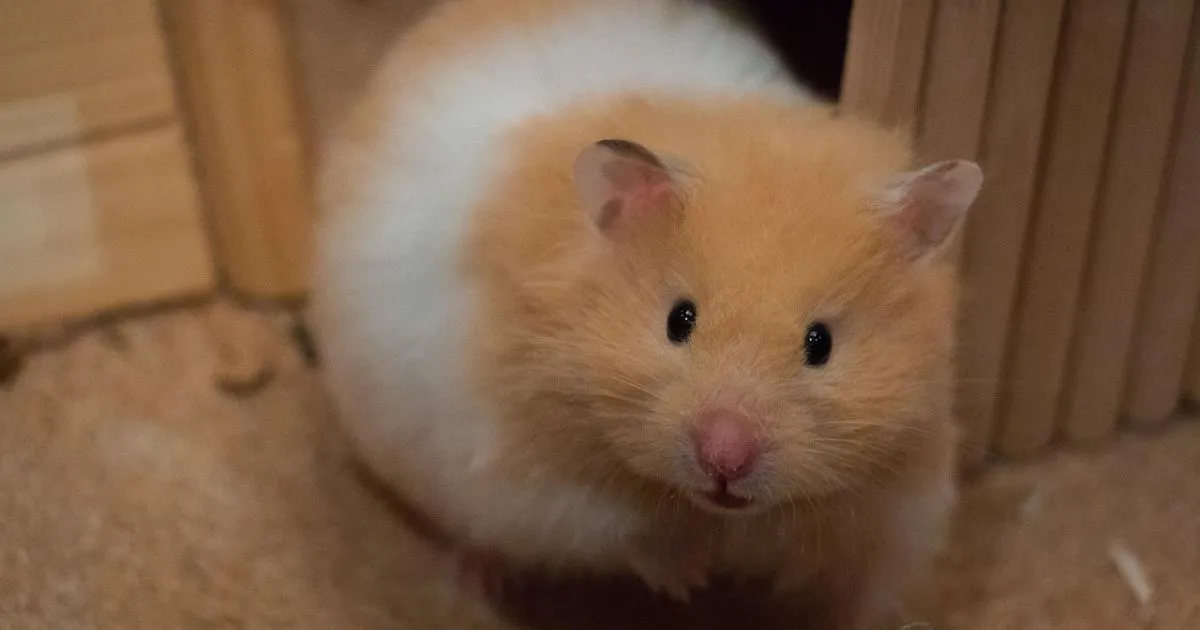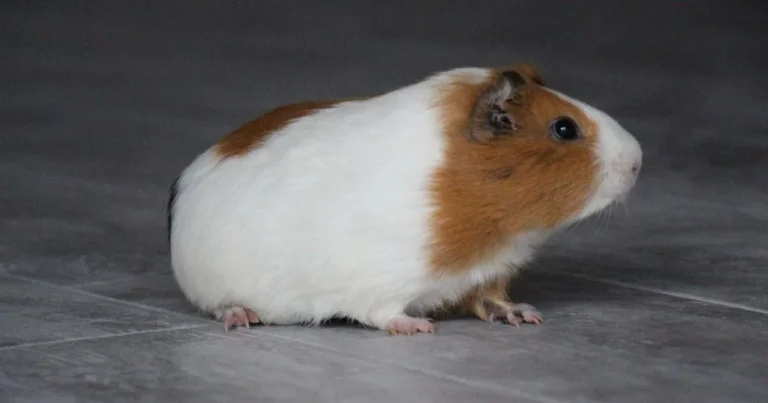Hamster Care Basics: Average Lifespan and How to Extend It
Table of Contents
Getting a hamster means welcoming a cute friend into your life. They usually live between 1.5 to 3 years. But, with the right care, you can make their life longer and happier.
It’s important to know how to take care of your hamster. Things like their genes, food, home, and health affect how long they live. By taking good care of them, you can improve their life quality.
Good care makes a big difference for your hamster. It’s about choosing the right home, feeding them well, and keeping them stress-free. Spending time on their daily needs can help them live their best life.
Having a hamster is a joy and a big responsibility. By caring for them well, you can make their life longer and strengthen your bond with them.
Understanding Different Hamster Breeds and Their Lifespans
Choosing a hamster breed is important. Each breed has its own traits and lifespan. The right hamster can greatly impact your life.
Hamster breeds vary in size, behavior, and how long they live. Knowing these differences helps you pick the best hamster for you.
Syrian Hamsters: The Golden Standard
Syrian hamsters, also known as golden hamsters, are very popular. They are larger and live 2-3 years. They are also known for being gentle.
- Largest of all hamster breeds
- Solitary animals requiring individual housing
- Excellent for first-time hamster owners
Roborovski Hamsters: The Tiny Speedsters
Roborovski hamsters are the smallest and fastest. They live 3-4 years. Despite their small size, they offer long companionship.
- Extremely active and quick
- Challenging to handle due to speed
- Best observed rather than cuddled
Dwarf Campbell’s Russian Hamsters: Social Miniatures
These hamsters live about 1.5-2 years. They are more social than Syrian hamsters. They can sometimes live in small groups.
Chinese Hamsters: The Unique Variety
Chinese hamsters have a unique look and live 2-3 years. They look like mice and are less common pets.
| Hamster Breed | Average Lifespan | Size |
|---|---|---|
| Syrian Hamsters | 2-3 years | Large |
| Roborovski Hamsters | 3-4 years | Very Small |
| Dwarf Campbell’s Russian | 1.5-2 years | Small |
| Chinese Hamsters | 2-3 years | Small |
Choose your hamster breed wisely. Think about your space, how you like to handle them, and your care commitment. Each breed brings its own joys and challenges.
Essential Housing Requirements for Best Hamster Care
Choosing the right hamster cages is key for your pet’s health and happiness. Your furry friend needs a big, safe place to live. It should meet their specific needs. Professional hamster owners know that good housing is more than just a container.
When picking hamster supplies for your cage, think about these important things:
- Minimum floor space of 450 square inches
- Cage height of at least 24 inches
- Secure ventilation openings
- Escape-proof design
Different hamster cages have their own benefits. Let’s look at the most popular ones:
| Cage Type | Pros | Cons |
|---|---|---|
| Wire Cages | Excellent ventilation | Potential bar chewing |
| Glass Aquariums | Secure environment | Limited airflow |
| Modular Plastic Cages | Multiple connected spaces | Higher cost |
| Bin Cages | Affordable | DIY construction required |
Pro tip: Always think about your hamster’s comfort when choosing a home. The right cage can make a big difference in their life and might even help them live longer.
Remember, hamster supplies are more than just a cage. You’ll need bedding, hiding spots, and fun items to make a complete home. This will keep your pet healthy and happy.
Creating the Perfect Habitat Environment
Creating a cozy home for your hamster is very important. The right habitat affects their health and happiness. Knowing what makes a good home for them is crucial.
Temperature and Lighting Control
Hamsters need a certain temperature to be happy. They do best in temperatures between 65-75°F (18-24°C). Make sure their cage is not near windows or vents to keep the temperature steady.
- Keep away from direct sunlight
- Protect from cold drafts
- Use indirect, soft lighting
Ventilation Requirements
A good hamster habitat needs air to breathe. A cage with good ventilation keeps moisture down and air fresh. Look for cages with lots of air holes or mesh.
- Select cages with multiple ventilation points
- Avoid completely enclosed environments
- Clean the habitat regularly to maintain air quality
Cage Placement Tips
Where you place your hamster’s cage matters a lot. Choose a quiet spot away from loud places and other pets.
- Select a stable, flat surface
- Avoid direct kitchen or bathroom proximity
- Maintain consistent room temperature
Remember, a thoughtfully designed habitat is key to your hamster’s long-term health and happiness.
Nutritional Requirements for a Longer Life
Choosing the right hamster food is key to your pet’s health and long life. A balanced diet is crucial for a long and healthy life for your hamster.
Hamsters have special nutritional needs. Their diet should mainly include commercial hamster food. This food is made to meet their specific needs.
- Commercial hamster food pellets (60-70% of diet)
- Fresh vegetables (20-25% of diet)
- Occasional protein sources
- Limited fruit treats
When picking hamster food, choose high-quality pellets. These should have a mix of seeds, grains, and nutrients for hamsters.
| Food Type | Recommended Serving | Nutritional Benefits |
|---|---|---|
| Commercial Pellets | 1-2 tablespoons daily | Balanced protein, carbohydrates, vitamins |
| Fresh Vegetables | Small pieces, 2-3 times weekly | Minerals, hydration, fiber |
| Protein Sources | Tiny portions, 1-2 times weekly | Muscle maintenance, growth support |
Important dietary considerations include avoiding sugary or fatty foods that can harm your hamster’s health. Always introduce new hamster food items gradually and watch for any adverse reactions.
Fresh water should always be available, changed daily. This keeps your hamster hydrated and healthy. Proper nutrition is essential for a long, happy life for your hamster.
Exercise and Mental Stimulation Needs
Keeping your hamster active and engaged is key for its health and happiness. Regular exercise and mental challenges can greatly improve your pet’s life. Hamster toys are crucial for both physical activity and mental stimulation.
Types of Exercise Equipment
Choosing the right hamster toys is vital for your pet’s well-being. The most important exercise equipment includes:
- Exercise wheels for continuous physical activity
- Tunnels for exploration and mental stimulation
- Chew toys to maintain dental health
- Climbing structures for additional exercise
Importance of Daily Activity
Hamsters need daily physical activity to stay healthy. Exercise helps prevent obesity, reduces stress, and keeps muscles strong. Aim for at least 30 minutes of active playtime outside their cage each day.
| Hamster Toy Type | Benefits | Recommended Duration |
|---|---|---|
| Exercise Wheel | Cardiovascular health | 1-2 hours nightly |
| Tunnel Systems | Mental stimulation | 30-45 minutes daily |
| Chew Toys | Dental maintenance | Continuous access |
Safe Play Time Options
Always supervise your pet when introducing hamster toys and play areas. Create a secure, enclosed space for exploration. Use soft bedding, remove potential hazards, and ensure the play area is escape-proof. Rotate toys regularly to keep your hamster interested and prevent boredom.
Health Monitoring and Disease Prevention
Keeping your hamster healthy means being proactive and watching closely. Their health depends on regular checks and quick action when needed.
Understanding common health issues and spotting early signs is key. Start by keeping their environment clean and stress-free. Consistent care is also important.
- Watch for changes in eating habits
- Monitor daily activity levels
- Check for physical abnormalities
- Maintain clean living spaces
Vets suggest regular check-ups to keep your hamster healthy. Catching health problems early can help your pet live longer.
| Health Indicator | Normal Signs | Warning Signs |
|---|---|---|
| Appetite | Consistent eating | Sudden weight loss |
| Coat Condition | Smooth, clean fur | Patchy or rough coat |
| Energy Levels | Active during awake periods | Lethargy or excessive sleeping |
Hamsters face risks like wet tail, breathing problems, and stomach issues. Spotting symptoms early can stop big problems.
“Prevention is always better than cure when it comes to small pet care.” – Exotic Pet Veterinary Association
Your care is vital for your hamster’s health. Watch them closely, keep their space clean, and see a vet when needed. This will help your hamster live a long, joyful life.
Signs of Aging in Hamsters
As your hamster gets older, you’ll see changes in its behavior and health. Spotting these signs early helps you care for your aging friend better.
Aging hamsters go through physical and behavioral changes. Knowing these changes lets you adjust your care. This ensures your hamster stays comfortable.
Physical Changes to Watch
- Noticeable weight loss
- Dull or thinning fur quality
- Reduced muscle tone
- Slower movement and decreased flexibility
Behavioral Shifts in Hamster Behavior
Your hamster’s personality will change as it ages. You might see:
- Increased sleeping periods
- Less enthusiasm for play
- Reduced social interaction
- More frequent periods of rest
Activity Level Modifications
Senior hamsters need special care to live well. Consider these changes:
- Provide softer bedding for comfort
- Create easily accessible food and water stations
- Reduce handling frequency
- Maintain gentle, warm environment
Keeping a close eye on your hamster’s health is key. It helps you give compassionate care that meets its changing needs.
Common Health Issues and Life Expectancy Impact
Keeping your hamster healthy means knowing about common health problems. These can shorten their life. Catching symptoms early and getting vet help can greatly improve their life.
Hamsters face many health challenges that can shorten their lives. Some big health issues include:
- Wet Tail Disease: A severe stress-related condition causing intense diarrhea
- Respiratory infections that can quickly become life-threatening
- Skin diseases that may indicate underlying health problems
- Dental issues affecting nutrition and overall wellness
Spotting health problems early is key. Your vet can give treatments that might help your hamster live longer.
| Health Issue | Potential Impact on Lifespan | Warning Signs |
|---|---|---|
| Wet Tail | Can reduce lifespan by 50% | Watery diarrhea, lethargy |
| Respiratory Infection | Potential life-threatening condition | Wheezing, discharge from nose/eyes |
| Skin Diseases | Moderate impact on longevity | Excessive scratching, hair loss |
Looking after your hamster’s health is crucial. Regular vet visits, clean homes, and good food can help avoid these health risks.
Proper Handling and Stress Reduction
Understanding hamster behavior is key to a strong bond with your pet. Hamsters are delicate and need gentle care. Proper handling can greatly reduce stress and improve their life.
When you approach your hamster, remember they are naturally cautious. Your goal is to make them feel safe and secure.
Building Trust with Your Hamster
Building trust takes time and a consistent approach. Start by:
- Allowing your hamster to become familiar with your scent
- Speaking softly near their habitat
- Avoiding sudden movements
- Offering treats from your hand
Safe Handling Techniques
Mastering safe handling means understanding hamster behavior and respecting their space. Here are key techniques:
- Let the hamster approach you first
- Gently scoop them up using both hands
- Support their entire body
- Keep handling sessions short
Stress Management Methods
Minimizing stress is crucial for your hamster’s health. Create a calm environment by:
- Maintaining consistent daily routines
- Providing quiet, peaceful living spaces
- Avoiding loud noises
- Keeping handling gentle and predictable
Remember, each hamster has a unique personality. Patience and observation are key to understanding their individual hamster behavior and building a trusting relationship.
Environmental Factors Affecting Lifespan
Your hamster’s environment is key to their health and how long they live. Knowing what affects their environment helps you make a better home for them.
Several important things affect a hamster’s lifespan:
- Cage cleanliness and hygiene
- Temperature regulation
- Humidity control
- Social interaction quality
- Stress reduction strategies
Keeping their home clean is essential. A dirty cage can harm your hamster with bacteria and infections. Clean cages regularly to keep them healthy.
| Environmental Factor | Impact on Lifespan | Recommended Action |
|---|---|---|
| Temperature | Direct correlation with health | Maintain 65-75°F range |
| Humidity | Respiratory health | Keep between 40-60% |
| Cage Location | Stress reduction | Quiet, stable area away from direct sunlight |
Temperature and humidity are very important. Extreme conditions can cause significant stress, which can shorten their life. Don’t put their cage near drafts or heating vents.
Social interaction and mental stimulation are also important. Hamsters may not always want to be with others, but toys and tunnels can keep them happy and healthy. Gentle handling can also help.
Conclusion
Caring for your hamster is more than just keeping them clean. It’s about understanding what they need to live well. By following the tips in this guide, you’ll make sure your hamster is happy and healthy.
Every part of hamster care is important. This includes their food, home, and how to keep them calm and active. Remember, caring for your hamster makes them a beloved family member. Knowing their breed and what makes them special helps you bond with them.
Learning about your hamster’s behavior and health is rewarding. It makes them a lively and engaging pet. Regular vet visits, the right food, fun activities, and gentle handling are all part of being a good owner. Your effort will help your hamster live a long, joyful life with you.
Enjoying time with your hamster is a special experience. Every moment you spend together strengthens your bond. By caring for your hamster well, you’ll not only extend their life but also create a deep connection with them.







